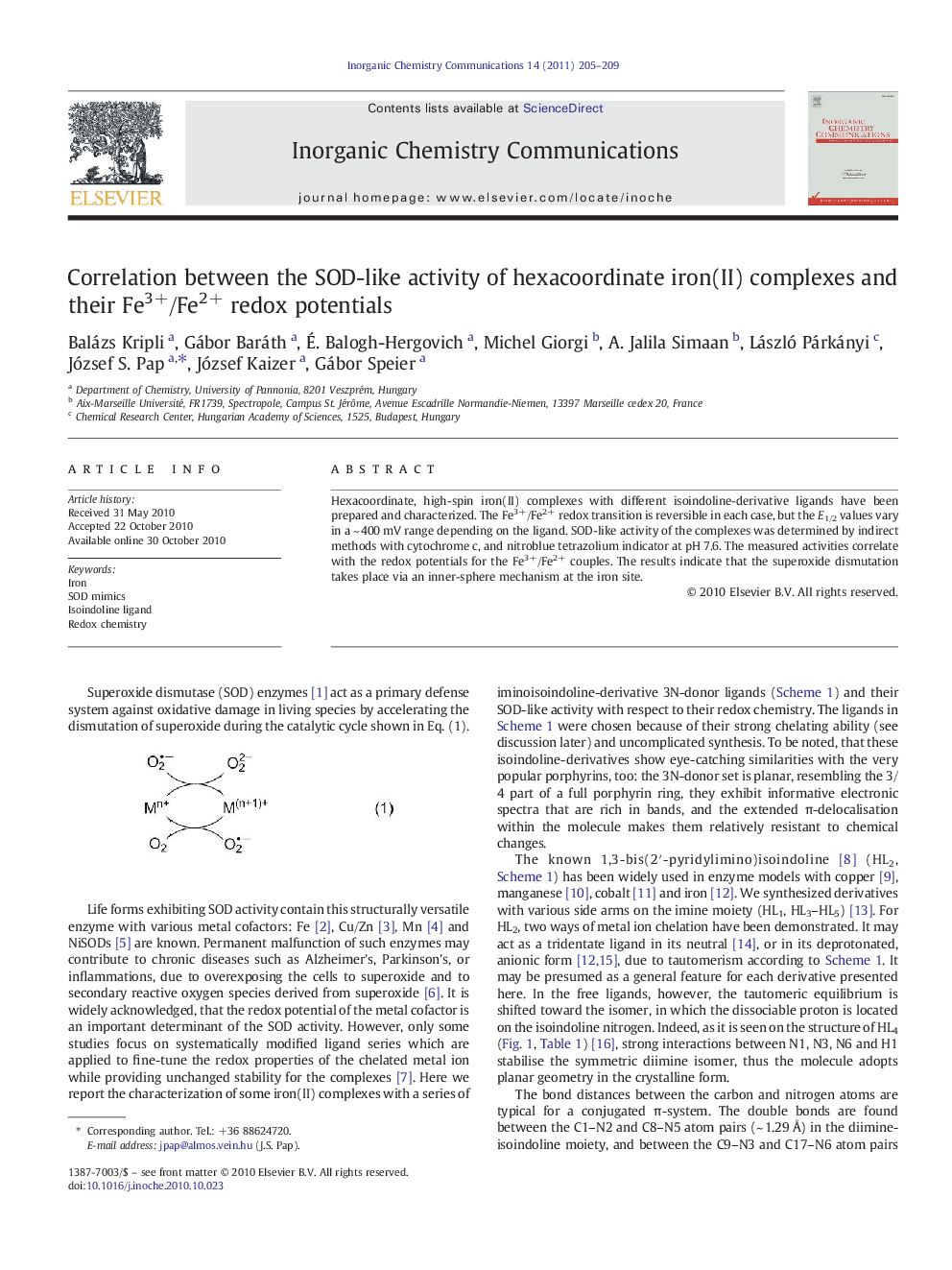| Article ID | Journal | Published Year | Pages | File Type |
|---|---|---|---|---|
| 1305875 | Inorganic Chemistry Communications | 2011 | 5 Pages |
Hexacoordinate, high-spin iron(II) complexes with different isoindoline-derivative ligands have been prepared and characterized. The Fe3+/Fe2+ redox transition is reversible in each case, but the E1/2 values vary in a ~ 400 mV range depending on the ligand. SOD-like activity of the complexes was determined by indirect methods with cytochrome c, and nitroblue tetrazolium indicator at pH 7.6. The measured activities correlate with the redox potentials for the Fe3+/Fe2+ couples. The results indicate that the superoxide dismutation takes place via an inner-sphere mechanism at the iron site.
Graphical AbstractHexacoordinate, high-spin iron(II) complexes with different isoindoline-derivative ligands have been prepared and characterized. The Fe3+/Fe2+ redox transition varies in a ~ 400 mV range depending on the ligand. SOD-like activity of the complexes correlates with the redox potentials for the Fe3+/Fe2+ couples. The results indicate that the superoxide dismutation takes place via an inner-sphere mechanism at the iron site.Figure optionsDownload full-size imageDownload as PowerPoint slideResearch Highlights► High-spin Fe(II) complexes with isoindoline-based ligands synthesized and characterized. ► The Fe3+/Fe2+ redox transitions span a ~400 mV range. ► SOD-like activity of the complexes correlates with the redox potentials.
